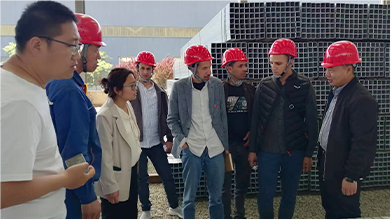concrete frp
The Role of Carbon Fiber Reinforced Polymer (CFRP) in Concrete Structures
Concrete is one of the most widely used construction materials in the world, renowned for its strength and durability. However, it has its limitations, particularly in tensile strength and susceptibility to cracking. To enhance the performance characteristics of concrete, the incorporation of advanced materials such as Carbon Fiber Reinforced Polymer (CFRP) has gained significant attention in recent years. CFRP not only improves the structural integrity of concrete but also provides numerous other benefits that make it a valuable addition to modern engineering practices.
What is CFRP?
CFRP is a composite material that consists of a polymer matrix reinforced with carbon fibers. These fibers are known for their high strength-to-weight ratio and exceptional stiffness, making CFRP an ideal candidate for use in civil engineering applications. The lightweight nature of CFRP allows for easier handling and installation, which can lead to reduced labor costs and shortened construction times.
Enhancing Strength and Durability
One of the main advantages of using CFRP in concrete structures is the enhancement of tensile strength. Concrete, while strong in compression, is relatively weak in tension. The integration of CFRP strips or laminates into concrete elements can significantly increase their load-carrying capacity and mitigate the risk of cracking. This is particularly beneficial in applications such as bridge retrofitting, where existing structures often experience increased load requirements.
CFRP also enhances the durability of concrete structures by providing resistance to environmental factors such as corrosion, moisture, and chemical exposure. Unlike traditional steel reinforcement, which is prone to rust and degradation, CFRP is impervious to corrosion. This characteristic makes it an excellent choice for structures exposed to harsh conditions, such as coastal environments or industrial settings where chemical exposure is a concern.
Flexibility in Design
concrete frp

Another significant benefit of CFRP is its design flexibility. Engineers can easily mold CFRP to fit various shapes and sizes, allowing for innovative and efficient designs that traditional materials may not accommodate. This adaptability makes CFRP a valuable asset in modern architectural projects where aesthetics and functionality often go hand in hand.
Sustainability
In today's construction industry, sustainability is a critical concern. CFRP's lightweight properties can lead to reduced material usage and lower overall environmental impact during production. Additionally, since CFRP is non-corrosive and has a long service life, structures reinforced with CFRP require less frequent maintenance and, consequently, less resource consumption over time. This aligns with the growing emphasis on sustainable building practices.
Challenges and Considerations
Despite its numerous advantages, the use of CFRP in concrete applications is not without challenges. The initial cost of CFRP materials can be higher than conventional reinforcement options, which may deter some project developers. However, it is essential to consider the long-term savings associated with reduced maintenance and increased service life when evaluating the cost-effectiveness of CFRP.
Moreover, there is a need for ongoing research to better understand the long-term behavior of CFRP-reinforced concrete, particularly in varying environmental conditions. As more data becomes available, guidelines and standards for the use of CFRP in construction will continue to evolve.
Conclusion
In conclusion, Carbon Fiber Reinforced Polymer (CFRP) has emerged as a transformative material within the realm of concrete structures. Its ability to enhance strength, durability, and design flexibility positions CFRP as a key component in the future of civil engineering. As the construction industry continues to prioritize sustainability and innovation, the adoption of advanced materials like CFRP will play an instrumental role in building resilient and enduring infrastructure. While challenges remain, the potential benefits of CFRP far outweigh the drawbacks, making it a critical topic for research and application in modern construction practices.
-
The Smarter Choice for Pedestrian AreasNewsJun.30,2025
-
The Gold Standard in Round Drain CoversNewsJun.30,2025
-
The Gold Standard in Manhole Cover SystemsNewsJun.30,2025
-
Superior Drainage Solutions with Premium Gully GratesNewsJun.30,2025
-
Superior Drainage Solutions for Global InfrastructureNewsJun.30,2025
-
Square Manhole Solutions for Modern InfrastructureNewsJun.30,2025
-
Premium Manhole Covers for Modern InfrastructureNewsJun.30,2025
